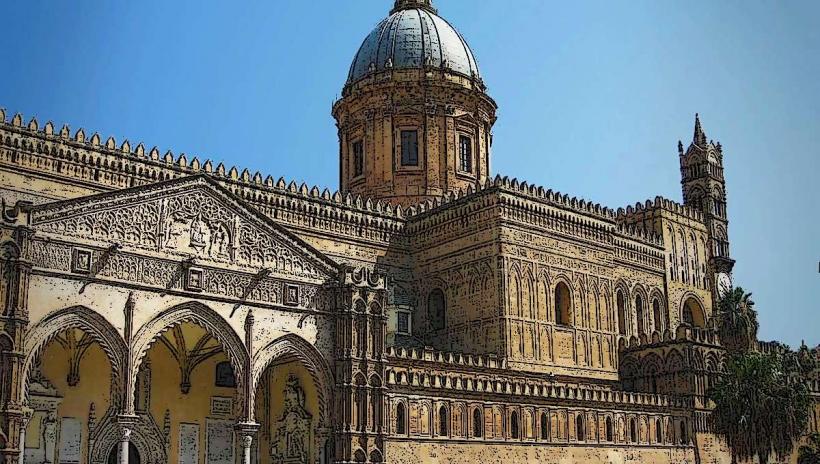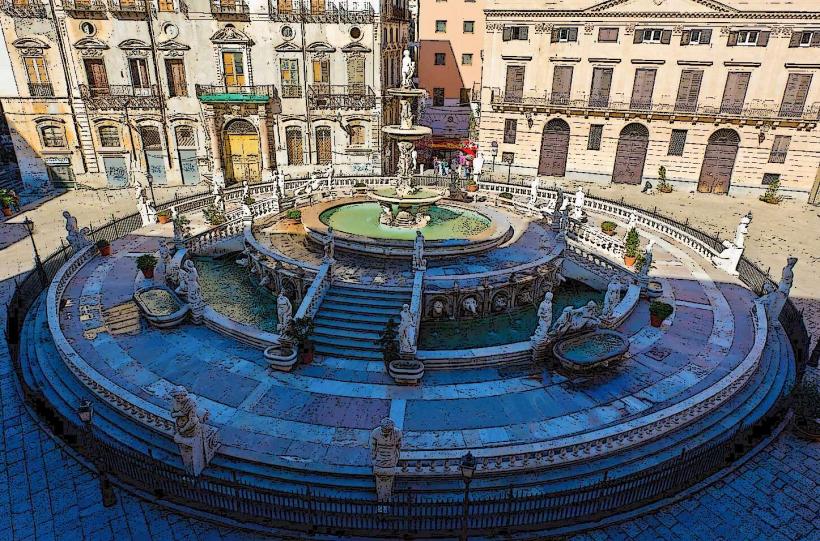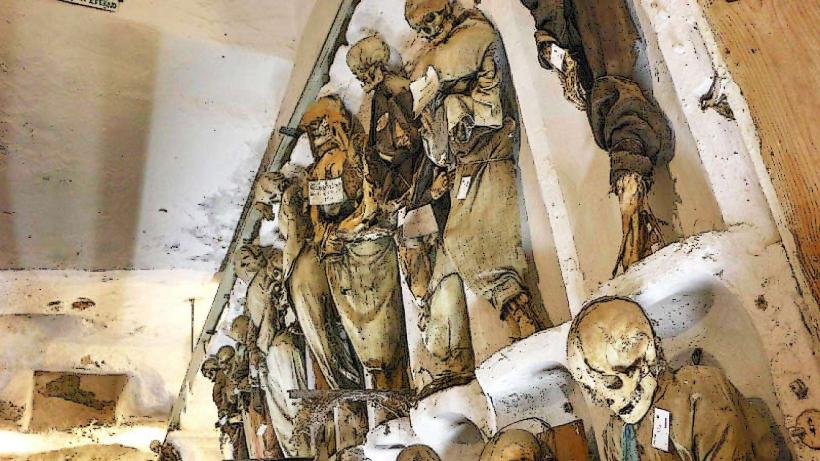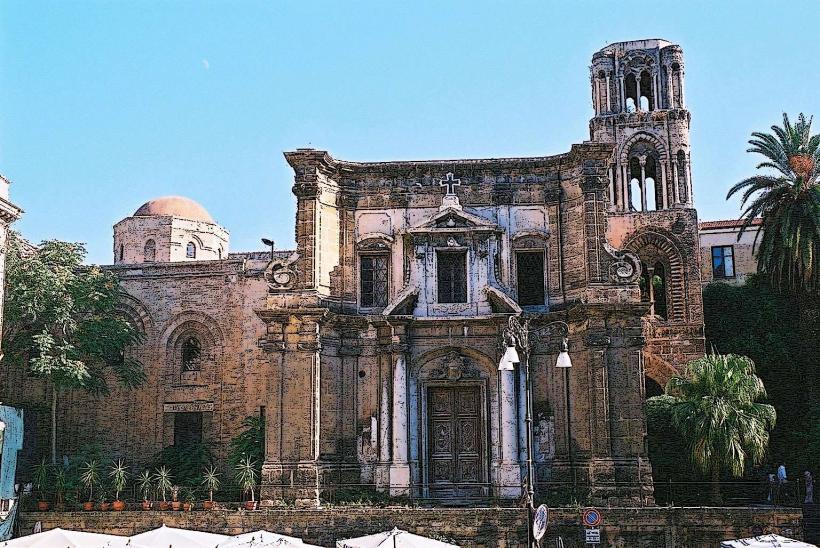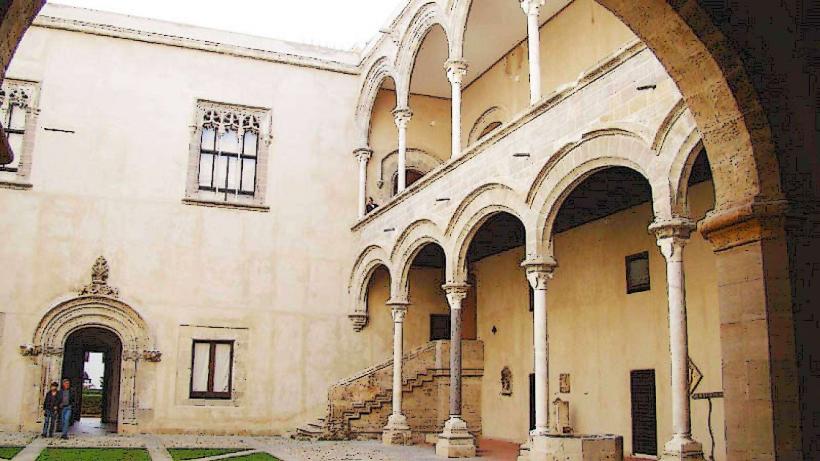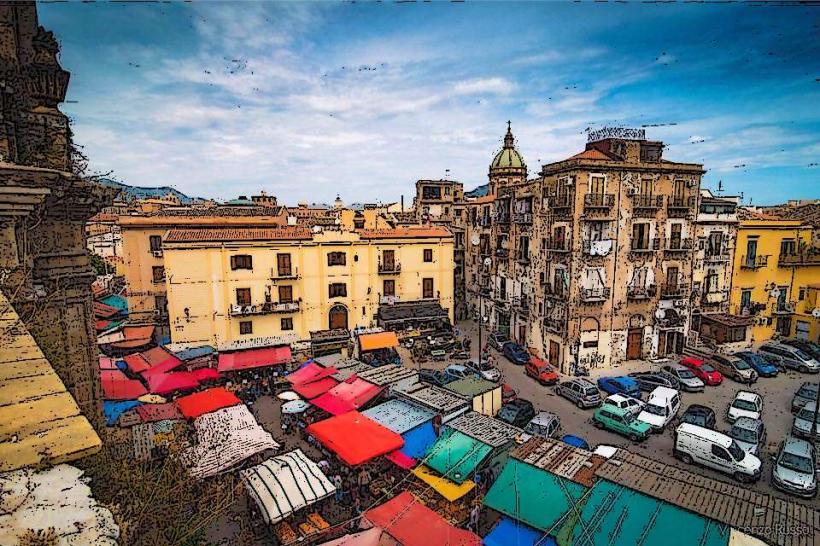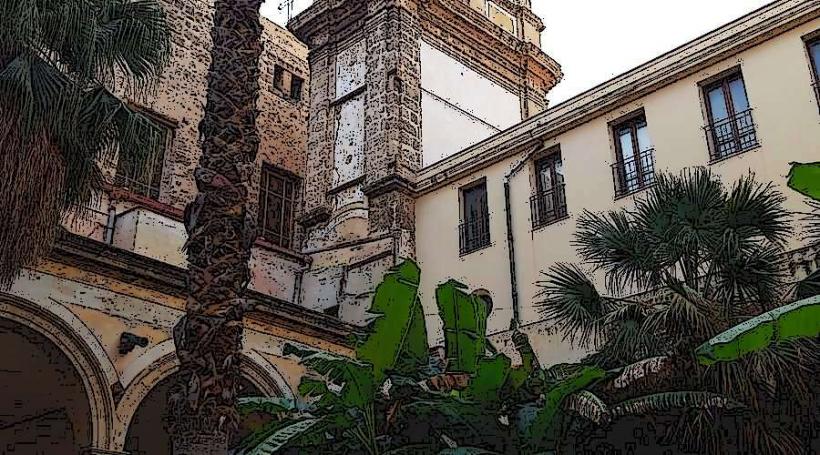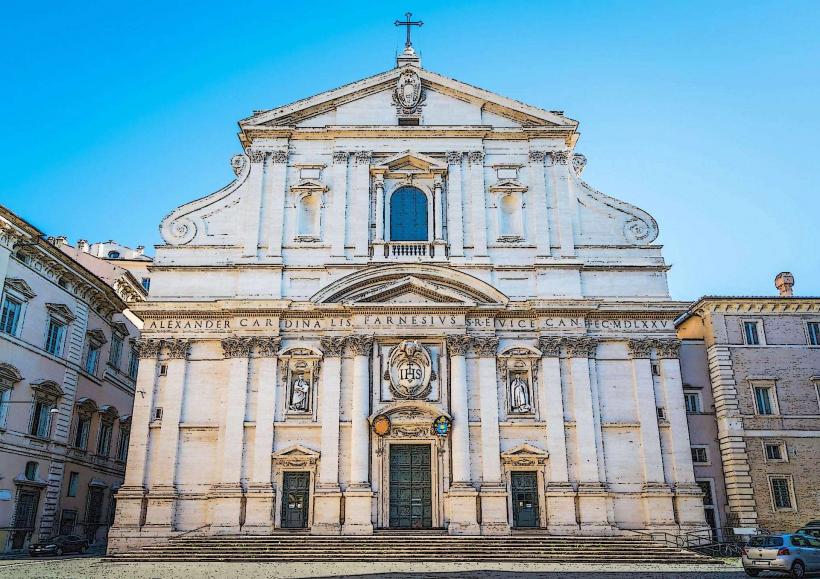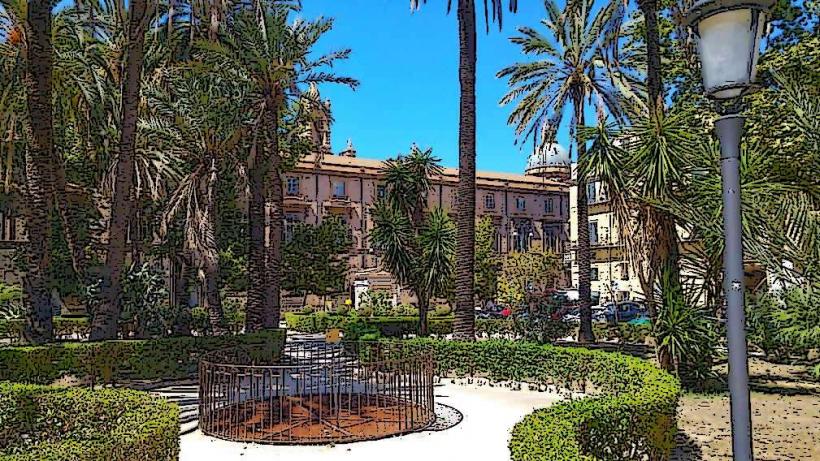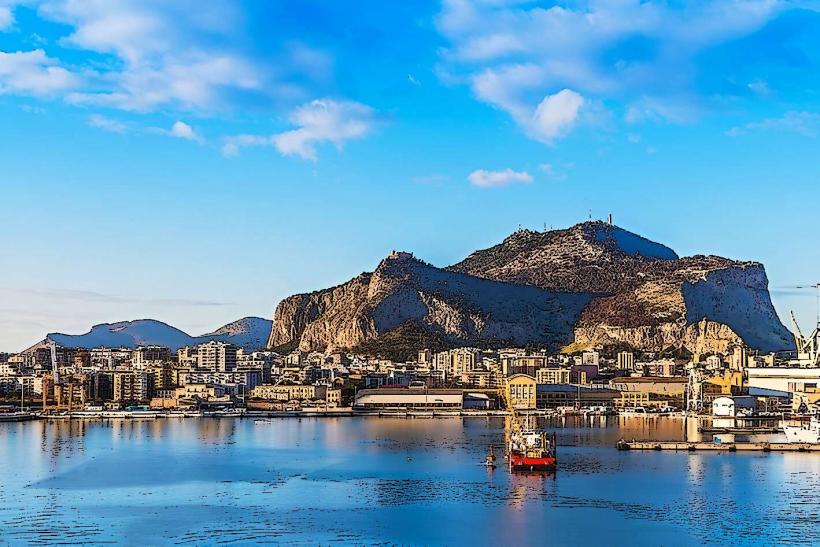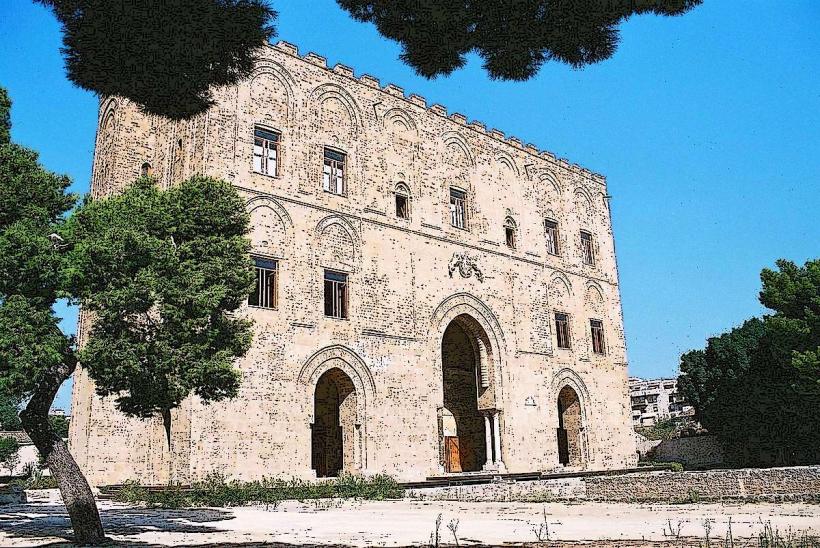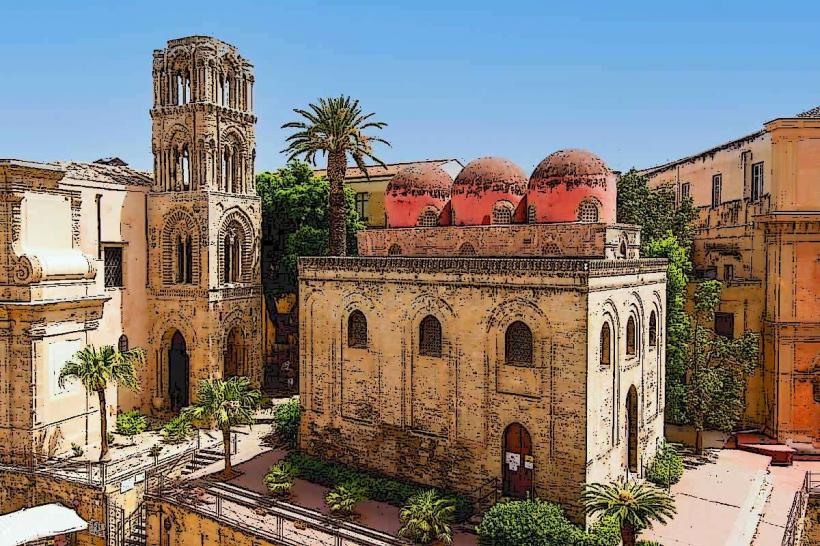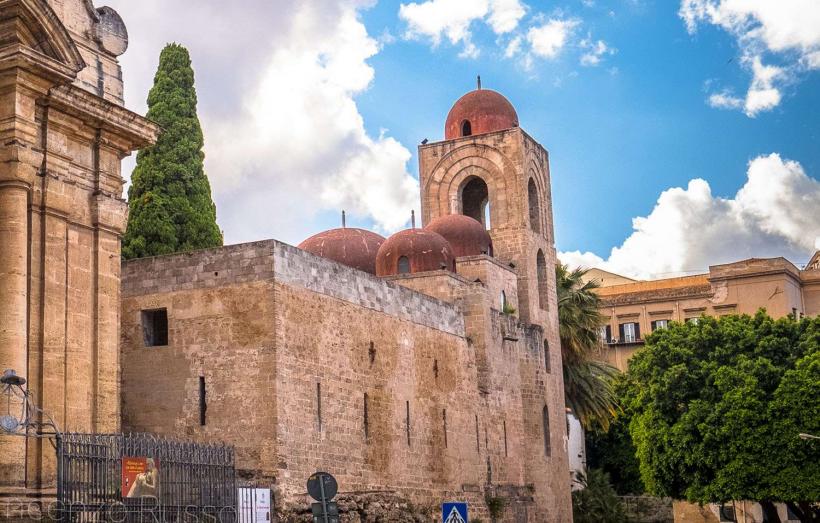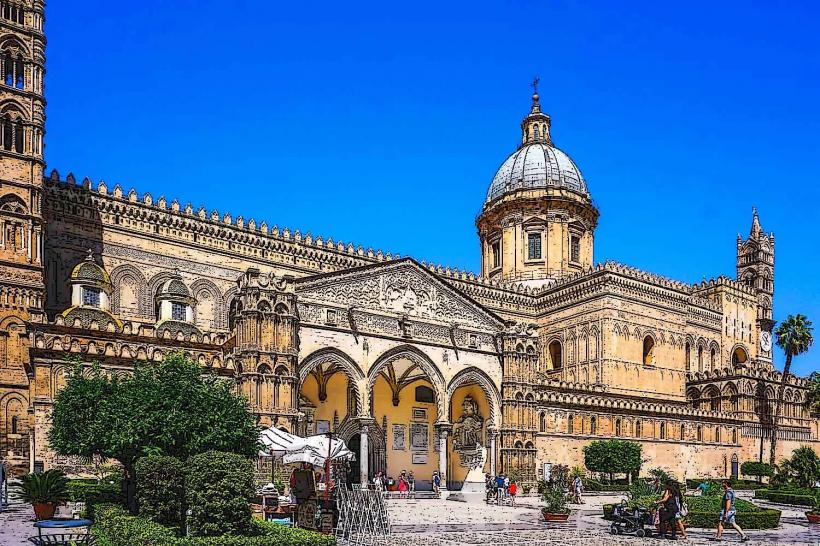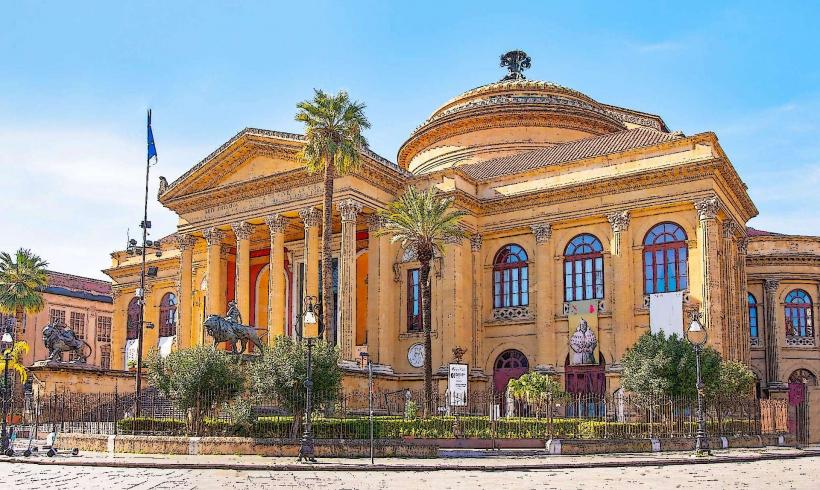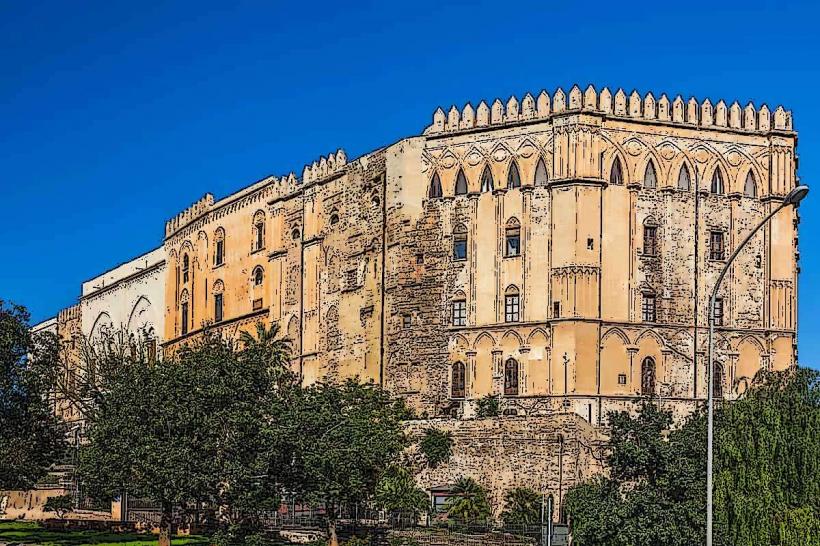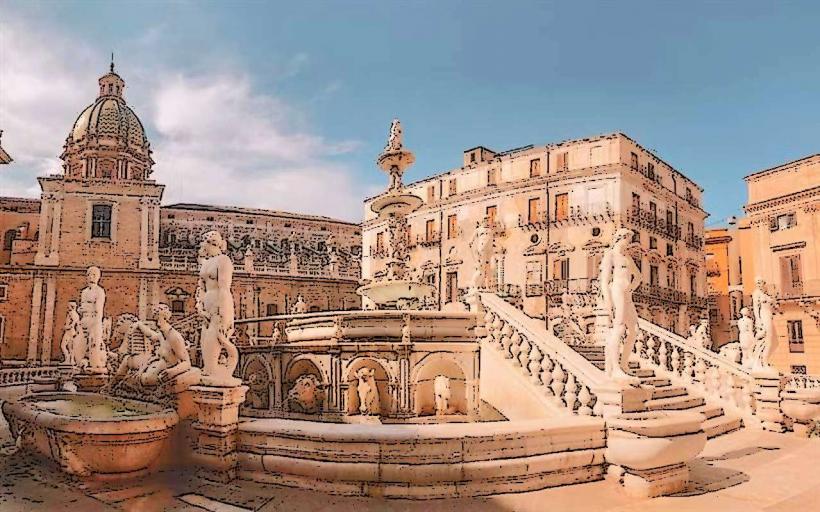Information
Landmark: Quattro CantiCity: Palermo
Country: Italy
Continent: Europe
Quattro Canti (translated as "Four Corners") is one of the most famous and recognizable landmarks in Palermo, Sicily. This Baroque square, located at the intersection of two major streets in the historic center of Palermo, is a stunning example of 17th-century urban planning and architectural design. It serves as both a physical and symbolic crossroads of the city.
Overview and Historical Context:
Location and Layout: Quattro Canti is situated at the intersection of Via Vittorio Emanuele (the main street running through the historic center of Palermo) and Via Maqueda. The square is framed by four magnificent Baroque buildings, which give it its name. The term "Quattro Canti" refers to the four corners of the intersection, each adorned with architectural elements that correspond to different symbols and themes.
Architectural Design: The square is designed as a Baroque urban space and is an example of the “piazza quadrata” or square-shaped city planning that was popular in the 17th century. The intersection is framed by four symmetrical buildings, each with:
- Three stories, with a central fountain in the middle.
- A concave shape that curves inward toward the center of the square, creating a dramatic visual effect.
Baroque Facades: Each of the four facades of Quattro Canti represents one of the seasons, one of the saints of Palermo, and one of the Spanish kings who ruled over Sicily at the time. The facades are adorned with:
- Statues of the Four Seasons: Representing Spring, Summer, Autumn, and Winter, these are positioned on the upper corners of each building.
- Statues of the Patron Saints of Palermo: Each building features a statue of a saint important to Palermo, such as Saint Rosalia, Saint Agatha, Saint Catherine, and Saint Oliva.
- Statues of Spanish Monarchs: The lower corners of each facade showcase statues of the Spanish kings who ruled Sicily during the Baroque period, including Philip V of Spain, whose reign is reflected in these statues.
The Central Fountain: In the middle of the intersection is a fountain, which further enhances the Baroque aesthetic of the square. The fountain, with its elegant design and historical significance, adds to the dynamic atmosphere of Quattro Canti.
Historical Significance:
- Urban Planning: Quattro Canti was designed to serve as both a decorative urban space and a strategic point of access to key areas of Palermo. The square is considered a perfect example of Baroque urban planning, where aesthetics and functionality blend seamlessly.
- Symbol of Palermo's Integration: The creation of Quattro Canti marked an important moment in Palermo’s urban development during the Spanish Baroque period. The design reflected the influence of the Spanish monarchy over Sicily at the time, as well as the city’s devotion to its local saints.
- Cultural and Political Center: The intersection of Via Vittorio Emanuele and Via Maqueda was an important junction in the city, making Quattro Canti a focal point for political, religious, and social life. It remains a vibrant area where locals and visitors alike gather.
Function as a Gathering Point: Historically, Quattro Canti served as a hub for the city’s social, political, and cultural life. Its central location made it a prime space for public events, processions, and festivities, particularly those related to the Catholic saints and religious practices of Palermo.
Modern Day: Today, Quattro Canti continues to be a central part of Palermo’s urban life. It remains a popular spot for tourists and locals, not only for its historical and architectural significance but also because it connects several key parts of the historic center of the city. Visitors often stop at Quattro Canti to admire its beautiful Baroque facades and to take photographs of this remarkable city square.
Visitor Experience:
- Exploring the Baroque Architecture: Quattro Canti is best appreciated by standing at the center of the intersection and looking up at the towering Baroque facades. The level of detail in the statues and decorations is extraordinary, and visitors can admire the interplay of light and shadow on the buildings' curved surfaces.
- Historical Insights: Quattro Canti offers visitors a unique insight into the cultural and religious importance of the city during the Spanish Baroque era. Each statue and architectural feature tells a story about the city's religious devotion, royal connections, and historical identity.
- Nearby Attractions: Quattro Canti is located in the heart of Palermo's historic center, making it a perfect starting point for exploring other significant nearby landmarks, such as Piazza Pretoria, Teatro Massimo, and the Palermo Cathedral.
In Summary:
Quattro Canti is a quintessential example of Palermo's Baroque heritage, offering a stunning visual and historical experience. With its symmetrical layout, ornate statues, and fountains, it serves as a key landmark in the city. It is not only a remarkable architectural feature but also a symbol of Palermo’s religious devotion, its connection to Spanish rule, and its role as a vibrant cultural center throughout history.

